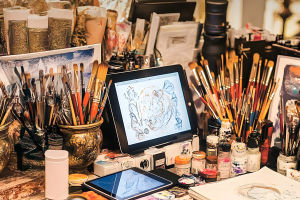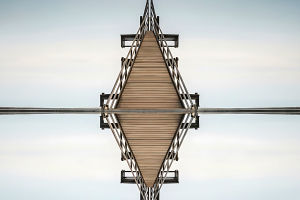In the world of product design, striking the right balance between aesthetics and functionality is a constant challenge.
In the world of product design, striking the right balance between aesthetics and functionality is a constant challenge. You've probably had a moment when you've seen something that looks amazing but, when it comes to use, it falls short.
Or, conversely, something highly functional, but not a pleasure to look at. So, how can designers avoid these pitfalls and create products that are both beautiful and practical?
Understanding the Balance
To design products that meet both visual and functional needs, you need to consider two key factors: form and function. Form refers to how a product looks—the shape, color, texture, and overall aesthetic. Function, on the other hand, is how well it performs its intended task. If either of these elements falls short, the user experience suffers.
When working with this balance, it's essential to make sure neither form nor function overshadows the other. A product that combines sleek design with intuitive functionality will always be a favorite among users.
1. Start with a Purpose
A successful product always starts with a clear purpose. Why does this product exist, and what problem does it solve? When you have a solid understanding of the core function, you can design the aesthetics to complement it.
Example: Take a smartwatch. While the aesthetic design is sleek and modern, it also needs to serve its primary function—tracking health metrics, notifications, etc. If the design is too bulky or difficult to wear, it will fail its purpose, no matter how good the features are.
2. Focus on User Experience
Product functionality goes beyond just the technical specs. It also includes how users interact with the product. To create a smooth user experience, focus on ergonomics and ease of use. For example, a chair might look incredible, but if it's uncomfortable to sit in for long periods, the design fails.
Example: Consider ergonomic office chairs. These chairs are not only designed to look modern and sleek but also to support long hours of sitting without strain. The aesthetic design enhances comfort, making them both functional and visually appealing.
3. Integrate Aesthetic Elements Strategically
Aesthetics don't need to be compromised for the purpose of function. You can incorporate beautiful design elements that also improve performance. For instance, the curved back of a chair may not only look elegant but can be optimized for better lumbar support.
Example: Many high-quality headphones prioritize both sound quality and comfort, ensuring that materials like soft ear cushions and sleek finishes contribute to both functionality and style.
4. Test and Iterate
It's crucial to test how the product performs in real-life scenarios. Even the most well-thought-out design may have unexpected issues when it's put into use. Iterative testing helps identify these issues early on. Whether it's usability testing, feedback from potential customers, or prototypes, make sure to revisit your designs.
Example: The early versions of many electric vehicles went through numerous design changes. Initial complaints about seat comfort and the position of some controls led to tweaks that enhanced both the user experience and the car's appeal.
5. Keep the User in Mind
While designers can get caught up in creating something visually stunning, the user experience must remain the focal point. In some cases, simplicity can be more appealing than complexity. Overdesigning can create unnecessary complications, while simplicity ensures the product is functional without detracting from its appearance.
Example: A voice-controlled home speaker, for example, can be simple in design yet highly functional. Its minimalistic look makes it fit well in almost any home, while its features, like voice control, are easy to access and highly usable.
Finding the Sweet Spot
In the end, the balance between form and function is about finding the sweet spot where both elements enhance each other. A beautifully designed product that works well is not only more enjoyable to use, but it also leaves a lasting impression.
Whether you're designing a new smartphone, a kitchen gadget, or a piece of furniture, consider how aesthetics can improve function—and vice versa.
This approach ensures that every design choice serves a purpose and supports the overall experience. The next time you find yourself sketching out a new idea, remember that the best designs are those that make life easier, more enjoyable, and, of course, visually pleasing.


